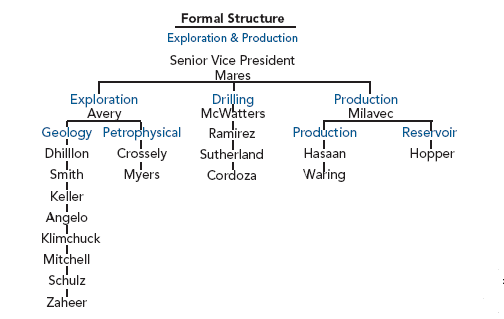Work and Networks
Since many organizations have adopted or are considering adopting technologies to facilitate internal employee social networking, naturally research is beginning to surface as to the success of these internal networking projects, and that is also aimed at understanding the enablers and barriers in the technology adoption.
This week I came across an excellent study titled 'Motivations for Social Networking at Work' (PDF link) from IBM Research that discusses the internal IBM social network called Beehive. Thousands of IBM employees participate in the network that is meant to facilitate connection, sharing of interests, and very importantly in a large organization, expanding one's network beyond the immediate work group to colleagues that were previously 'invisible'.Flickr - e.phelt
The IBM Research group undertook an extensive study of participation and usage patterns to better understand the true impact of Beehive in the company, and while there are many interesting findings (I really recommend reading the entire study), I thought it very interesting to focus on a key question; Why do employees share information on the network?
The research revealed three main motivations for employees to participate in the social network that they termed, Caring, Climbing, and Campaigning.
Caring - Connecting with co-workers on a personal level was found to be the most commonly cited benefit to participating in the network. Particularly in a large, global, distributed organization like IBM, where the opportunity for face-to-face contact with many colleagues is limited, this 'caring' element was critical. Connecting on a more personal level helps engenders affinity, which in turn leads to an increase in collaborative interactions.
Climbing - The researchers used the term 'climbing' to describe individual's motivation to participate in the network to further their career development and aspirations to 'climb' the corporate ladder. By active participation in specific technical topics, people could be seen as 'thought leaders' and could potentially leverage that position to land better assignments, more high-profile projects, and further their careers. In addition, similar to external social networks like Twitter and LinkedIn, simply making connections and building out one's network was seen as a benefit, and in fact necessary to long-term career growth. In a large company it can be easy to get 'lost', but by actively participating and connecting in the internal social network some employees felt that this was a way to make a name for themselves.
Campaigning - Gathering support for projects and ideas, driving traffic to personal profiles, and project web pages was termed 'Campaigning' by the researchers. Employees interested in using the social network for this purpose emphasized the ability to get their ideas more visibility with senior managers as an important factor and a major motivator to participate in Beehive. Most notably, the ability to connect with a wide range of influencers and potential supporters outside of the traditional, hierarchical structures was seen as an essential element of Beehive. Users could build coalitions of support for their ideas and projects in ways frankly impossible in the 'old' manner.
What does this all mean to organizations that are considering launching similar projects to give their internal networking projects the best chance for success?
Make it personal - The internal network can't be all business, all the time. People (most anyway) want to share some personal information with their colleagues. The ability to connect personally has consistently been shown to be an important aspect of ongoing and productive workplace collaboration. Let folks post their favorite about their favorite sports teams, swap recipes, and upload personal profile pictures. Don't feel like every post, comment, or contribution has to have the 'official' stamp of approval.
Individual value - Employees will only continue to participate and contribute if they see a direct personal and individual benefit. Whether it is easier access to information and expertise to help them solve their problems, or a way to build their reputations as leaders. Employees will give of themselves and of their knowledge, but they have to see the benefits back to them as well. Make sure that you build ways for employees to see how participation will truly help them in their current jobs, as well as in their career goals.
The Big Boys have to play - Many technology projects stall, or even fail due to lack of executive support. Internal social networking projects are no different. But in addition to the vague concept of 'support', these projects may also require active participation. When employees see executives and directors as active participants and contributors on the network it can have a dramatic effect on overall enthusiasm and participation. Just like the company holiday party where everyone wants a little face time with the boss, connecting with leaders and executives on the network can be a really important driver of the overall success of the project.
Definitely take a look at the entire piece from IBM Research, there are lots of excellent insights as to the motivations behind internal network participation. We are getting past the point of wondering about the right technology to choose for these projects, and arriving at the much harder place of figuring how to make them work.
I would love to hear from you on what motivates or curtails participation in your organization's communities?

 Steve
Steve

